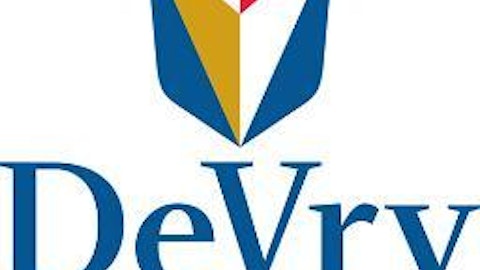The for-profit education industry in the United States is shrouded in controversy and concern. Investors are understandably shaken by poor financial performance and even worse stock price performance over the past year. Making matters worse, new student enrollment figures continue to decline for America’s biggest publicly-traded education companies. After dramatic declines at Strayer Education Inc (NASDAQ:STRA), Bridgepoint Education Inc (NYSE:BPI), and Apollo Group Inc (NASDAQ:APOL), are these stocks primed for comebacks and ripe for the plucking? Or, does each of these stocks deserve a failing grade?
The Good
A positive for stocks in the for-profit education industry is that they certainly aren’t expensive. For the time being, consider that Strayer, Bridgepoint, and Apollo are trading for trailing price-to-earnings ratios of 9, 4, and 5, respectively. In addition, these companies have conservatively capitalized balance sheets and generate strong returns on capital and assets.
Bridgepoint Education Inc (NYSE:BPI) and Apollo Group Inc (NASDAQ:APOL) seem to be in the best financial condition of the for-profit education stocks. The companies are extremely well capitalized, with cash and equivalents amounting to more than half of each company’s market capitalizations. Furthermore, Bridgepoint and Apollo have almost no long-term debt, holding long-term debt to equity ratios of just 7%.
For-profit education stocks have been besieged by concerns of government regulation serving a crushing blow to the industry in the form of cuts to the federal grants that these programs rely on. Last summer, Congress blasted the industry for placing the priority on advertisement and recruitment over quality of education. While it’s true that the current administration has spoken negatively about for-profit education, that doesn’t explicitly mean that the industry is doomed.
For example, a great amount of investor concern revolves around the status of Pell Grants, which provide need-based grants to low-income students and are crucial to for-profit educators. These companies derive the vast majority of their revenue from federal grants such as this. Due to the federal government’s continued lack of progress on tackling the budget deficit, investors are worried that the Pell Grant Program would be vulnerable to cuts. Fortunately for the industry, a report from the Congressional Budget Office showed that the Pell Grants Program is on pace to run a surplus in 2013 and 2014, and are not expected to receive budget cuts.
The Bad
However, don’t think that the dark clouds have lifted completely from the for-profit education industry. Cuts to Pell Grants were just one worry facing the industry; a separate concern is the dropping enrollment rates at these programs. Total enrollment at Strayer for the 2013 winter term decreased 5% from the same term in 2012. New student enrollments decreased 5%, and continuing student enrollment also decreased 5%.





